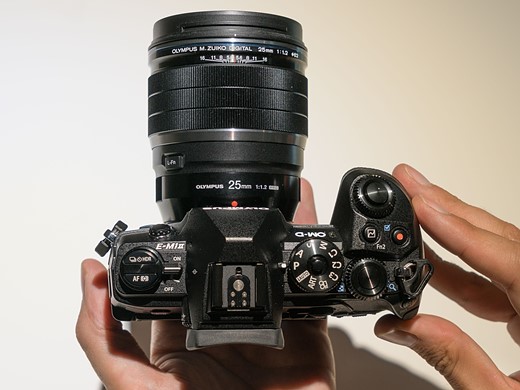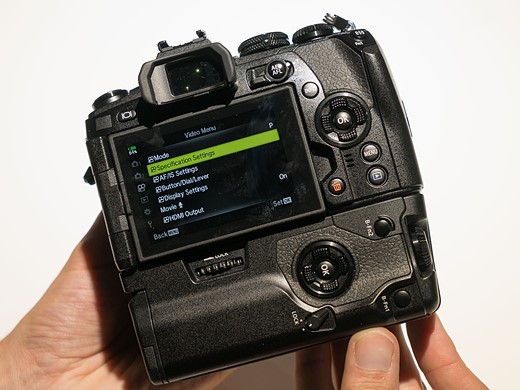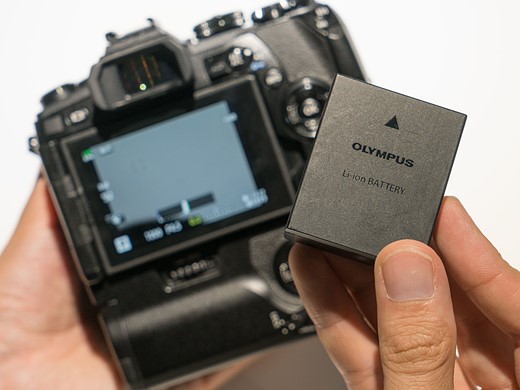Photokina 2016: Hands-on with Olympus OM-D E-M1 II
Olympus used this year's Photokina tradeshow as a platform to announce the development of a new flagship camera - the OM-D E-M1 II. And we just got our hands on it. Click through this slideshow for a tour of the camera's key new features.
Photokina 2016: Hands-on with Olympus OM-D E-M1 II
The E-M1 II is very well-built. We expected nothing less from the successor to the original E-M1, and it's obvious that the new camera is made to withstand shooting in tough conditions.
As well as flagship build quality, the E-M1 II also features the now-traditional plethora of buttons, dials and switches that Olympus adds to all of its high-end cameras.
Photokina 2016: Hands-on with Olympus OM-D E-M1 II
Resembling a small DSLR, the E-M1 features a high-resolution electronic viewfinder which offers a live view feed at a rate of 120fps. The reaction time is a mere 6 milliseconds. The low, mixed lighting of a Photokina meeting room was not ideal to really assess the quality of the finder in normal use, but it certainly seems sharp and clear.
Photokina 2016: Hands-on with Olympus OM-D E-M1 II
One of the paradoxes of high-end Micro-Four Thirds cameras has been their size. They're small compared to most DSLRs, but much bigger than you might expect from the size of their sensors. The E-M1 II is a pretty bulky camera compared to some of Olympus's lower-end M43 offerings, but it is more comfortable to hold, and that bulky handgrip feels great.
Photokina 2016: Hands-on with Olympus OM-D E-M1 II
New in the E-M1 II is a fully articulating rear LCD screen (the E-M1's screen was a simpler tilting design). Olympus tells us that this kind of articulation is more popular with videographers, which makes sense.
The E-M1 II offers a very impressive 4K video specification, boasting up to 236mbps data throughput. From our brief use, the revamped image stabilization system provides uncannily stable video footage, too.
Photokina 2016: Hands-on with Olympus OM-D E-M1 II
Twin SD card slots allow for multiple configurations, including overflow (where one card simply acts as a spare) backup, and mixed-media recording. On shoots which involve both video and stills capture we suspect that a lot of photographers will record video to one card and stills to the other. The E-M1 II supports the latest UHS-II SD format.
Photokina 2016: Hands-on with Olympus OM-D E-M1 II
If there is one word that sums up the E-M1 II it's 'speed'. The autofocus system has been completely redesigned, with 121 cross-type AF on-sensor phase detection points. One of the camera's two quad-core processors is dedicated to AF, which enables the E-M1 to shoot at up to 18fps at full-resolution, with continuous autofocus.
Our brief experience is extremely positive. Even in very poor lighting, the E-M1 II seems to achieve focus virtually instantaneously, and we're keen to try out the tracking performance once final samples start to ship.
Photokina 2016: Hands-on with Olympus OM-D E-M1 II
The E-M1 II will be compatible with a new dedicated grip, which provides duplicated vertical controls and the option to add a second battery.
Photokina 2016: Hands-on with Olympus OM-D E-M1 II
Duplicated front and rear dials make handling easy in the portrait format - especially with longer, heavier lenses.
Photokina 2016: Hands-on with Olympus OM-D E-M1 II
Olympus claims that the E-M1 II's new battery offers significantly greater endurance than the previous-generation in the original E-M1. It's hard to tell from this picture, but the new battery is certainly much larger physically. **** battery life figures have yet to be finalised.
We're very excited by the OM-D E-M1 II and we can't wait to try out a shipping sample once they become available to press later this year. What do you think? Let us know in the comments.
Więcej...

















 Odpowiedz z cytatem
Odpowiedz z cytatem